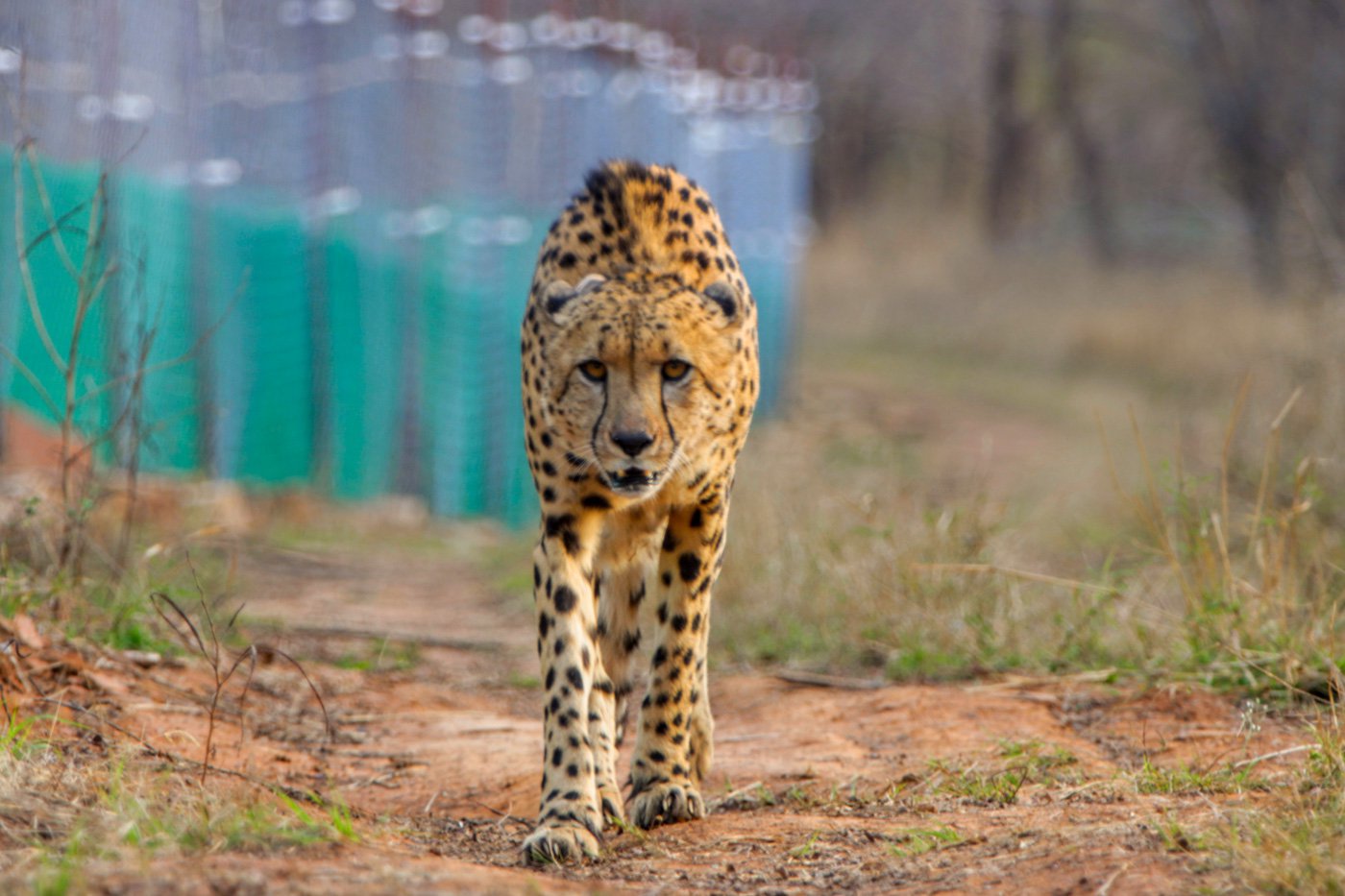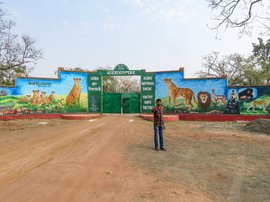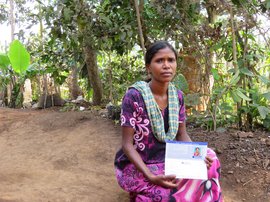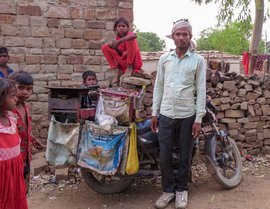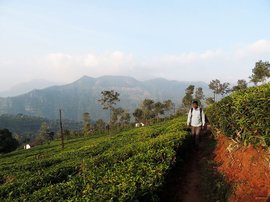When Gutti Samanya, a Sahariya Adivasi was enlisted as a ‘cheetah mitra ’ (friend of the cheetah) by the Madhya Pradesh forest department, he was told to “inform the forest ranger if you see the cats.”
It seemed an important enough job, even though not paid. After all, the African cheetahs were coming to Kuno national park from over 8,000 kilometres away, over sea and land, in cargo and military planes and helicopters. The Indian state was spending undisclosed amounts of foreign exchange on their travel, and emptying the coffers for conservation on their stay.
Cheetah mitras would keep them safe from poachers, and also save them from irate villagers into whose homes they might stray. So, the roughly 400-500 mitras , all forest dwellers, farmers and daily wagers, spread across small hamlets and villages bordering Kuno-Palpur National Park (KNP), readied for national service.
But since the cheetahs landed, they have spent a lot of time in caged spaces, and fences have gone up in the forests of Kuno, both to make sure they stay in, and others stay out. “We are not allowed in. There are new gates at Sesaipura and Bagcha,” says Sirinivas Adivasi who also signed up to be a cheetah
mitra
.


Left: The new gate at Peepalbowdi . Right: The Kuno river runs through the national park, and the cheetah establishment where visitors are not allowed, is on the other side of the river

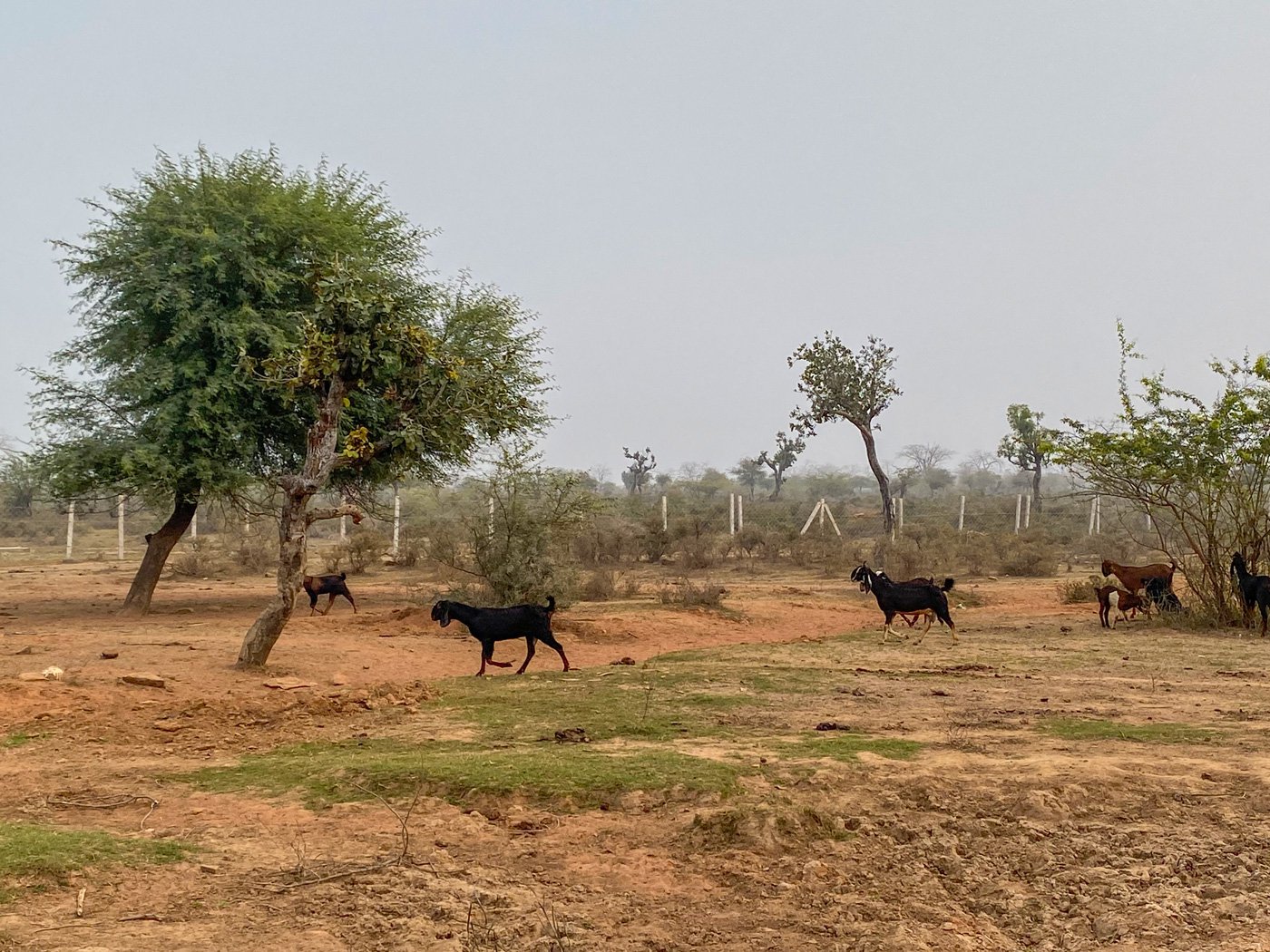
Gathering firewood (left) and other minor forest produce is now a game of hide and seek with the forest guards as new fences (right) have come up
Gutti and thousands of other Sahariya Adivasis and Dalits, once lived in the forests of Kuno with leopards and other wild animals. In June 2023, he was among the last residents of the park’s Bagcha village who were moved out 40 kilometres away, for the high-profile cheetah project. Now, eight months after losing his home to the cats, he’s a bit miffed at why he has to be locked out of the forest. “How can I be a cheetah mitra if I live so far away from the forest?” he asks.
For any Adivasi to even lay eyes on a cheetah has been impossible given the tight security and secrecy surrounding them. Both Gutti and Sirinivas say: “we have only seen a cheetah in a video,” circulated by the forest department.
February 2024 marks 16 months since the first batch of eight cats landed in September 2022, followed by a second batch of 12 in 2023; seven of the imported ones have died, as have three of the now 10 born on Indian soil – a total of 10 deaths so far.
Nothing to worry about, says the Action Plan for cheetah introduction as the criteria for the projects’ success needs a 50 per cent survival rate. But this is for free-ranging cheetahs, while Kuno’s cats have been held in bomas (enclosures) ranging from 50 x 50 metres and 0.5 x 1.5 square kilometre holds to allow them to quarantine, acclimatise, recover from any ill health and possibly hunt – all constructed at an estimated cost of Rs. 15 crores. They have not spent much time ranging in the wild, living, breeding and hunting despite that being a key aim of the project.
Instead, cheetahs are hunting in the current camps. However, “they cannot establish territories and start breeding. None of the South African female cheetahs have had sufficient time to interact with males. Six of the seven cubs born at Kuno have the same father, Pavan,” says Dr. Adrian Tordiffe. A veterinarian from South Africa, he was a key member of Project Cheetah before he says he was sidelined and finally dropped for speaking out.


A map of the soft release enclosures (left) for the cheetahs and quarantine bomas (right)
Kuno, once a small sanctuary of 350 sq km was doubled in size to become a national park so that wild animals could hunt in the open. Since 1999 over 16,000 Adivasi and Dalit people have been evicted from here for big cats to have a run of the place.
“ Hum bahar hai. Cheetah andar [We are out. The cheetahs are in]!” exclaims Mangilal Adivasi, a Sahariya tribal from Bagcha. The 31-year-old newly-displaced young man is desperately trying to get his new fields and home in Chakbamoolya, in Sheopur tehsil , up and running.
Gutti, Sirinivas and Mangilal are Sahariya Adivasis, ranked as a Particularly Vulnerable Tribal Group (PVTG) in Madhya Pradesh, and highly dependent on the forest for income from resin, firewood, fruits, roots and herbs.
“In Bagcha [from where they were displaced] we had access to the forests. I have left behind my over 1,500 chir gond [resin] trees over which my family has had rights for generations,” says Mangilal. Read: In Kuno; cheetahs in, Adivasis out . Now he and his village are 30-35 kms from their trees; they cannot even enter their forest – they have been fenced out.
“We were told we would get 15 lakh rupees [for the displacement], but we only got three lakh rupees to build a house, 75,000 to buy food and 20,000 for seeds and fertilisers,” says Magilal. The rest – the bulk of over Rs. 12 lakh – he has been told by a displacement committee set up by the forest department – has gone towards the nine bighas (roughly three acres) of land, electricity, roads, water and sanitation.
Ballu Adivasi is the patel (headman) of the newly established Bagcha village – the displaced people want the old name to continue. In the fading light of a winter evening he looks around at the construction debris, tents of black tarpaulin and bits of plastic fluttering in the cold wind. Half-finished brick and cement houses stretch into the distance, running parallel to a busy highway into Sheopur town. “We don’t have money to complete our homes or establish our fields with channels and slopes,” he says.


The residents of Bagcha moved to their new home in mid-2023. They say they have not received their full compensation and are struggling to build their homes and farm their new fields


'We don’t have money to complete our homes or establish our fields with channels and slopes,' says headman, Ballu Adivasi
“What you see is not a harvest we planted. We had to give the land on batai [lease] to people from around here. We could not plant a crop with the money they gave us,” says Ballu, who also points out that their land does not compare to the well-ploughed and levelled land of the host village of upper caste people.
When PARI interviewed Ballu in 2022 he had pointed out that others who had been displaced were still waiting for the state to fulfil its promises made 20 years ago: “we don’t want to be caught in that situation,” he said then as he dug in against the displacement. Read: In Kuno, no one gets the lion’s share
But that is exactly where he and the others are now.
“When they wanted us to leave Kuno, then phata phat [in no time] they would give in to our demands. Now if you ask, they turn away,” says Gutti Samanya, his cheetah mitra status notwithstanding.
*****
With the last of the Adivasis out, the 748 sq km of the national park is now exclusively for the cheetahs – a rare privilege and one that baffles Indian conservationists. They say it’s the Gangetic Dolphin, Great Indian Bustard, Sea Turtles, Asiatic Lion, Tibetan antelope and other native species that are “highly threatened… and priority species,” as listed in India’s Wildlife Action Plan 2017-2031 . Not cheetahs.
Getting cheetahs to Kuno has required the Indian state to jump hoops through legal and diplomatic obstacles. A 2013 Supreme Court (SC) order had “quashed” the plan to bring African cheetahs ( Acinonyx jubatus) to replace Asiatic cheetah ( Acinonyx jubatus venaticus ) which had gone extinct in India.
But in January 2020, on a plea filed by the National Tiger Conservation Authority (NTCA), the SC said cheetahs could come on an experimental basis. It also said that the NTCA alone could not decide its viability but should be guided by an expert committee.


The cheetahs came in special chartered flights and were moved in to Kuno in Indian Air Force helicopters
The high-level Project Cheetah Steering Committee of roughly 10 members was constituted. But scientist Tordiffe, who was on it, says, “I was never invited [to a meeting].” PARI spoke to many experts involved in the cheetah project who say their counsel has been routinely disregarded and, “people on top have no idea, but will not let us function independently either.” What was clear however was that someone very high up wanted the project to appear to be succeeding and any ‘negative’ news was frowned upon.
With the SC ruling opening a window, the cheetah project went full steam. In September 2022, the Prime Minister claimed it a victory for conservation and celebrated his 72nd birthday at Kuno with the first release of imported cheetahs.
The Prime Minister’s zeal for conservation is at odds with his alleged role in not allowing lions that were termed by the state as ‘the pride of Gujarat’ to leave the state when he was Chief Minister in the early 2000s. This was despite a SC ruling ordering the same as Asiatic lions are on the IUCN Red List of threatened species (International Union for Conservation of Nature).
Two decades later, a second home for lions continues to be a critical conservation need – we have the only population of the Asiatic lion ( Panthera leo ssp persica ) and they all live in one location – the Saurashtra peninsula in Gujarat. It was the lions that were supposed to come to Kuno – a conservation agenda rooted in science not politics.
Such was the push for cheetahs that India broke its strong stand against ivory sale to appease Namibia – from where the second lot of cats came. Our Wildlife (Protection) Act of 1972 , section 49B, prohibits any trade in ivory, even imports. Namibia is an ivory exporter, and so India abstained from voting on the commercial sale of ivory at the Panama meet of the Convention on International Trade in Endangered Species of Wild Fauna and Flora (CITES) conference in 2022. A clear case of quid pro quo .
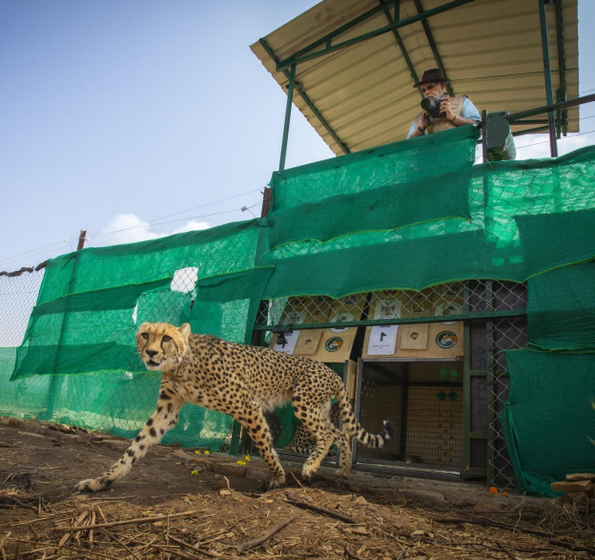
Prime Minister Narendra Modi released the first cheetah into Kuno on his birthday on September 17, 2022
With the last of the Adivasis out, the 748 sq km of the national park is now exclusively for the cheetahs. But our national conservation goals should be for the Gangetic Dolphin, Great Indian Bustard, Sea Turtles, Asiatic Lion, Tibetan antelope and other native species that are highly threatened. Not imported cheetahs
Back in Bagcha, Mangilal says the cats are not on his mind – his concerns are food and firewood for his family of six. “We are not going to be able to survive on farming alone. It won’t be possible,” he says firmly. In their homes inside Kuno they grew bajra, jowar, corn, lentils and vegetables. “This land is good for paddy, but to prepare the land is expensive and we don’t have money.”
Sirinivas says he will have to migrate to Jaipur for work. “There are no jobs for us here, and no earnings now that the forest is shut,” says the father of three, the youngest being just eight months old.
Jobs for locals was mentioned in the Action Plan for Cheetah Introduction in India released in November 2021 by the Ministry of Environment, Forest and Climate Change (MoEFCC). But besides a hundred jobs around cheetah care and tourism, no locals benefitted.*****
First lions and now cheetahs are playing a star role in both state and national politics, and image-building of politicians. Conservation aims are an eyewash.
The cheetah action plan is a 44-page document that lays the nation’s entire conservation agenda at the feet of the cheetahs who would ‘revive the grasslands…save the black buck…free the forests of humans…’ boost eco-tourism and even our global image would be embellished – ‘India would be seen to be contributing to world efforts to conserve cheetahs’.
Money for the project has come from the roughly Rs. 195 crore budget (2021) of the NTCA, the MoEFCC and public sector IndianOil’s corporate social responsibility (CSR). No other animal or bird has ever had it so good with money, manpower and management coming from Delhi.
Ironically, it is exactly this intense attention from the Centre that has put the cheetah project into jeopardy. “Rather than trusting the state government, the GoI officials chose to control the project from Delhi. That lead to many issues being left unaddressed, says J.S. Chauhan.
He was the Chief Wildlife Warden of Madhya Pradesh when the cats came. “I requested them that we don’t have enough space in KNP for 20 plus cheetahs and to allow us to send some animals to an alternate location as identified in the Cheetah Action Plan.” Chouhan is referring to Mukandra Hills Tiger Reserve [in neighbouring Rajasthan] that has 759 sq km of fenced-in forest.

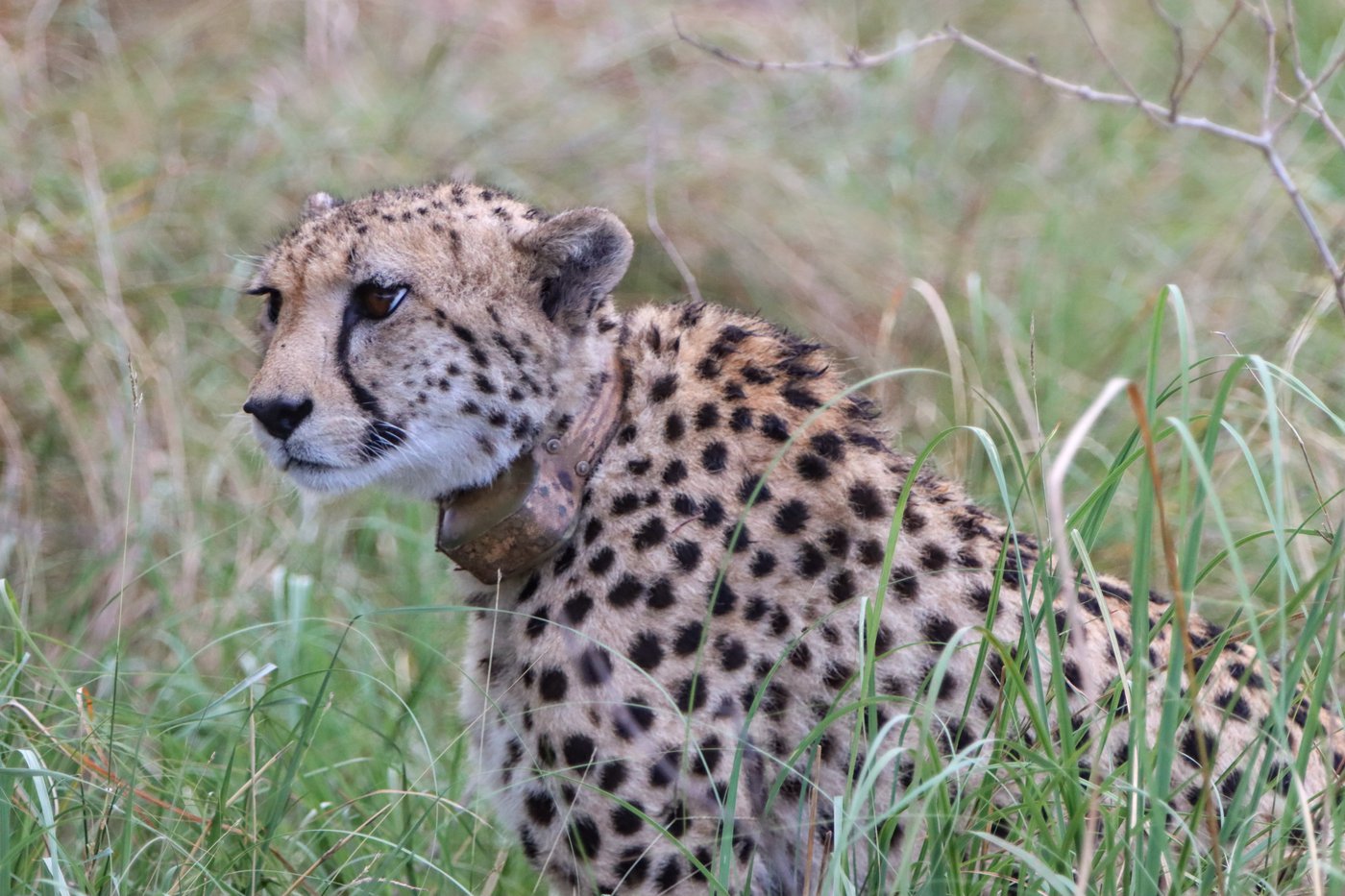
The hundreds of square kilometres of the national park is now exclusively for the African cheetahs. Radio collars help keep track of the cat's movements
A veteran Indian Forest Service officer, Chauhan says he wrote multiple letters requesting S.P. Yadav, Member Secretary, NTCA to “take appropriate decisions keeping in mind requirements of the species,” but got no response and was relieved from his post in July 2023, and retired a few months later.
Those managing the cheetahs on the ground were told categorically that sending the prize animals to a state (Rajasthan) then ruled by the opposition Congress government was not possible. “At least not till the elections [held in November and December 2023].”
Cheetah welfare was no longer a priority.
“We were naive to believe it was a simple conservation project,” says a chastened Tordiffe, who feels he now needs to distance himself from the project. “We did not anticipate the political impact of this.” He says he has done many other cheetah translocations but they were conservation-led, lacking this intense political juggling.
After the ruling Bharatiya Janata Party returned to power in MP in December, a press release was issued saying that Gandhi Sagar wildlife sanctuary (not a tiger reserve) also in Madhya Pradesh will be readied for the next translocation of cheetahs.
But where the third tranche of cheetahs will come from is not clear since South Africa is not rushing to send more animals as their government has received a lashing from conservationists at home who are asking why cheetahs are being sent to die in India. “There was some mention of asking Kenya, but Kenya's population of cheetahs is declining,” says an expert who prefers to remain anonymous.
*****
“ Jangal mein mangal ho gaya [The jungle is alight with celebration],” says Mangilal, half in jest.
A safari park doesn’t need wild cheetahs, caged ones will do just as well.
Cheetahs have the weight of the Indian state behind them – a bunch of veterinary doctors, a new hospital, over 50 trackers, 15 drivers of camper vans, 100 forest guards, wireless operators, infra-red cameras operators and even more than one helipad for important visitors. That’s only in the core area. The buffer zone also has its staff of guards and rangers.
Radio collared and tracked; the cheetahs are not ‘in the wild’ so exposure to humans is an event yet to happen. No locals are cheering as weeks before the cats landed, armed guards carrying rifles and accompanied by sniffer Alsatian dogs walked into their hamlets bordering the KNP. The men flashed their uniform and the dogs flashed their teeth – people were warned that if they messed with the cheetahs, the sniffer dogs would find their scent and be let loose to kill.


Kuno was chosen from among many national parks to bring the cheetahs because it had adequate prey like chitals ( Axis axis ) (right)
Kuno was chosen for having “adequate prey base,” says the Introduction of Cheetah in India, Annual Report 2023 . But either those facts are wrong, or the government is not taking any chances. “We need to build the prey base in KNP,” is what this reporter was told by Aseem Shrivastva, Principal Chief Conservator of Forests (PCCF), Madhya Pradesh. He took over in July 2023 and says the leopard population has grown to roughly 100 animals, putting pressure on food.
“We are building a 100-hectare enclosure to breed chital [spotted deer] as prey supplementation is critical,” adds Shrivastava, a career Indian Forest Service officer who has spent over two decades managing Pench, Kanha and Bandhavgarh tiger reserves.
Funds are not a problem for the cheetahs – the recently released report says, “Cheetah introduction phase 1 is for five years with a budget of INR 39 Crores (US$ 5 million).”
“The most hyped and one of the most expensive conservation projects,” is how conservation scientist, Dr. Ravi Chellam describes the cheetah introduction. He says supplemental feeding of the cats is setting a dangerous precedent. “If this is about conservation, by supplementing prey, we are upsetting the natural process with unknown consequences. We should be treating these cheetahs as wild animals,” adds the wildlife biologist who has studied the lion and is now watching the cheetah project carefully.
By holding them captive for prolonged periods and releasing prey animals into the relatively small enclosures, we are actually reducing their fitness in the long-term, adds Chellam, who had warned in 2022: “It’s going to be nothing but a glorified and expensive safari park.” His words are coming true: Cheetah safaris started with a five-day festival on December 17, 2023 and have already been used by around 100-150 people a day who are spending anything from Rs. 3,000 to 9,000 for a jeep safari into Kuno.

Kuno was cleared of indigenous people to make way for lions in 1999 as Asiatic lions are on the IUCN Red List of threatened species
Upcoming hotels and safari operators are raking it in – a night’s stay at an ‘eco’resort’ with a cheetah safari is priced between Rs 10,000 to 18,000 for two people.
Back in Bagcha, money is scarce and futures uncertain. “We got no benefit from the cheetah coming,” says Ballu. “If they had given us the full amount of 15 lakh rupees, we could have got our fields laid out properly with channels and levels, and finished building our homes.” Mangilal adds worriedly, “we are not doing any work, so how are we going to eat?”
Other aspects of daily life of the Sahariyas have also taken a hit. Deepi, a student of Class 8 in his old school, has dropped out after coming to the new settlement. “There is no school close by,” he says. The closest school is too far away. Younger kids have been fortunate – a teacher arrives every morning to instruct them under the open skies – there is no building. “But they all go,” says Mangilal grinning at my surprise. He reminds me that it’s the holidays in early January and the teacher has not come today.
A borewell has been dug for drinking water for the residents, and large water tanks are lying around. The complete absence of sanitation facilities is particularly tough for women.” Tell me what should we [women] should do?” says Omvati. “There are no toilets. And the land has been cleared so completely, there are no trees behind which women can hide. We can’t go in the open or in the standing crop which is all around.”


The cheetah action plan noted that 40 per cent of revenue from tourism should be ploughed back, but those displaced say they are yet to receive even their final compensation
The 35-year-old mother of five, says she has other more pressing problems than the grass and tarp tents they now live in: “We have to go very far to bring firewood. The forest is now far away. How will we manage [in the future]?” Others say they managing on the little wood they brought with them when they came, and the roots they are pulling out of their land, but that will soon be over.
The huge loss of non timer forest produce (NTFP) is being felt all around Kuno as the cheetah project has raised new fences. More on that in the next story.
The cheetah action plan had noted that 40 per cent of revenues from tourism should be ploughed back into the surrounding communities, a “Cheetah Conservation Foundation for those displaced, paid incentives to cheetah watchers in each village, eco- development projects like roads, sanitation, schools and more for surrounding villages.’ Eighteen months later it remains only on paper.
“How long will we live like this?” asks Omvati Adivasi.
Cover image by Adrian Tordiffe
